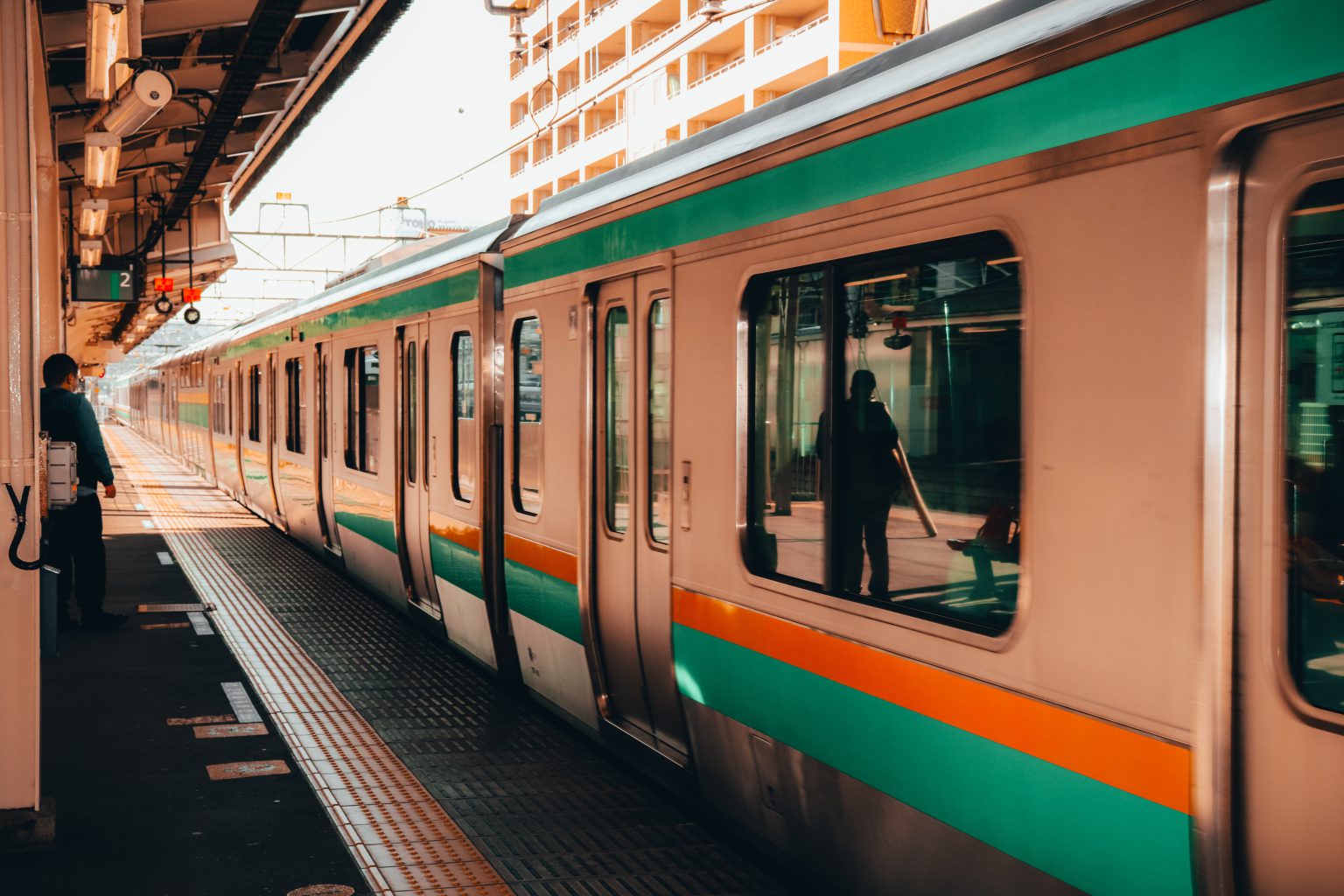There’s so many great things to explore in Gunma’s countryside, and so many great ways to do that. Here’s a breakdown of some of the many ways to get around Gunma and into regions beyond.
Trains
Local Trains
Local train service is provided in Gunma on the following lines:
Japan Railways (JR)
- Takasaki Line
- Joetsu Line
- Ryomo Line
- Agatsuma Line
- Shinetsu Line
- Hachiko Line
Tobu Railways
- Isesaki Line
- Kiryu Line
- Sano Line
- Nikko Line
Private Railways
- Jomo Electric Railway
- Watarase Keikoku Railway
- Joshin Electric Railway
Tickets can be purchased easily and simply at ticket machines in most stations. Using the ticket is simple–simply insert it into the slot on the right side of the ticketing gate you pass through, and then take it when it reappears near the end of the gate. Do the same when leaving, only you will not get your ticket back. On some private lines–such as the Jomo Line or Watarase Line–which don’t have a ticket machine in each station, you have to take a numbered ticket (整理券 seiriken) when you board the train and put money in the machine near the front or pay the conductor when you get off.
In addition to paper tickets, there are also touch-activated (IC) cards which can be used in place of tickets on the JR and Tobu lines. The two IC cards usable in Gunma are the SUICA (JR) and PASMO (Tobu). Either of these cards can be used on both the JR and Tobu lines, as well as on the subways and private railway companies in Tokyo and at many stores. They are rechargeable, so you simply load them up, touch to the blue IC sensor on the ticket gate, and go. You can also register them to your name, so if you lose it or have a problem with it, the balance can be transferred to a new card. You can purchase and recharge these at many JR and Tobu ticket machines, as well as at station service windows.
Shinkansen
Shinkansen services are available at Takasaki and Jomo-Kogen (Minakami) Stations on the Joetsu Shinkansen. Services on the Nagano Shinkansen are available at Takasaki and Annaka-Haruna stations.
Shinkansen tickets can be purchased at designated ticket machines, station Midori no Madoguchi windows, and at many travel agencies.
Limited Express Trains
In addition to Shinkansen, there are several limited express trains available connecting to Tokyo and other destination. Limited Express trains normally require two fare–a standard fare (same as the local lines) and an express fare (sometimes called a seat ticket), which is typically a set price. Depending on the line, you may be able to charge one or both of these fares to your Suica or Pasmo card.
The Limited Express Ryomo connects Akagi station in Midori to Tokyo via stations in Kiryu, Ashikaga (Tochigi), Ota, and Tatebayashi.
The Limited Express Asakusa, originating in Ueno (Tokyo) passes through Takasaki and several other stations to offer limited-express service into the Agastuma region, with bus transfer to the onsen resort town of Kusatsu.
The Limited Express Akagi runs between Shin-Maebashi/Maebashi to Ueno.
Limited express tickets can be purchased at designated ticket machines, station windows, and from many travel agencies.
Train Times
The easiest way to access trains times over the internet is by using Hyperdia (English/Japanese) or Yahoo! Transit (Japanese). With both of these sites, you can enter your beginning/ending station, departure/arrival times, and services to search or avoid (e.g. shinkansen, express trains, local trains). Both sites also have apps available for smartphones.
When using Hyperdia in English, be careful of the spelling of the station names. Most names do not take into account long vowels (e.g. O = OO/OU). Also, some station names with multiple words may be separated by spaces, hyphens, or may not be separated at all. However, as you input the station name, a drop-down will appear with a list of matching station names. If you don’t find your station at first, play around a little with the name and you should have no problems.
Buses
Local Buses
Most cities and locals have bus services. You can often find maps, timetables, and fares for these online, but they often require Japanese ability to locate at use. Gunma Bus Net (in Japanese) can also be used to find route and fare information.
Highway Buses
Highway buses can be a great way to travel long distances on a budget. They leave from many major stations and bus depots around Gunma and connect to locations in Kanto (including Narita and Haneda Airports), Tohoku, and Kansai.
Highway buses are much cheaper than the Shinkansen or a flight, but they are significantly slower, and long distances–such as Sendai or Osaka/Kyoto–are often over-night trips taking several hours.
Also, space is a premium on these buses–the cheapest tickets will get you a standard motorcoach seat and can be uncomfortable for those who are taller, wider, or have trouble sleeping in vehicles or with other people. More expensive ticket, obviously, buy larger and more private seating, although these seats are only available on certain buses.
Gunma Bus Net has a list (in Japan) of many highway bus routes for different companies and the time tables and fares for these buses. Nippon Chuo Bus (also in Japanese) operates many buses.
Tickets for highway buses can be purchased at many convenience stores and at travel agencies.
Air Travel
Most air travel for Gunma residents goes through Narita and Haneda airports near Tokyo. These airports can both be accessed by train; however, the above highway buses are often an easier and more convenient option.
No. 1 Travel offer discount travel website great for travel outside of Japan. The cheapest rates are usually displayed on the front page, and clicking on them will bring up a calendar with the available dates for ridiculously cheap travel. The flights are usually fixed with little flexibility and absolutely no cancellations. Click on a flight to send an inquiry and someone will respond right away. Inquire in advance as the cheapest rates go quickly. Last minute deals and packages are available.
IACE Travel are another discount travel website that works similarly to No.1 travel. I can often get cheaper flights through this website than from No.1, but usually they are fairly comparable. The inquiry process works the same.
Japan Airlines have several discount tickets are available for domestic JAL flights:
- Sakitoku Advanced Purchase Fare: book flights up to 28 days before the flight date for a discounted fare.
- Super Sakitoku Advanced Purchase Fare: book flights up to 45 days before the flight date for an even bigger discounted fare. These rates go quickly, so book early.
Discounts
Train Discounts
The Rinkai Free Ticket is perfect for a short weekend jaunt in the big city. Two day return ticket from Gunma to Tokyo, including all transport within the Tokyo Metropolitan area. You must use the ticket for two consecutive days (i.e. you can’t go down Friday night and return on Sunday). The fare works out to be about 10 yen more than a standard return fare, but it includes all your travel within Tokyo for those days, so if you plan on station hopping, this is a great deal.
Purchase the ticket at any JR station machine under “Discount Tickets”. Three tickets will print. One is your ticket from start point to Tokyo. The machine will keep this ticket when you arrive. Use the second ticket around Tokyo and for your trip home. The third ticket is a receipt with information. You wont need it.
The fares are as follows:
- Takasaki & Maebashi – 3790
- Isesaki – 4430
- Shibukawa – 4430
- Numata – 5050
- Minakami – 5890
- Nakanojo – 5890
The Seishun 18 seasonal pass is the cheapest way for groups or individuals looking to travel Japan for a few days and don’t mind taking the slow route. The fare is only available three times a year, so take advantage of it if you can.
- Spring (March 1 to April 10)
- on sale February 20 to March 31
- Summer (July 20 to September 10)
- on sale July 1 to August 31
- Winter (December 10 to January 10)
- on sale December 1 to December 31
For 11,500 you get 5 days of unlimited travel on any regular non-express JR train anywhere in Japan (Note: all Shinkansen, limited express, super express, express or sleeper trains are not valid with this ticket) It works out to about 2,300 per day.
The pass can be used by one person for any 5 days within the designated period (usually a two week block) or can be split amongst up to 5 people for one-day use.
Tickets can be purchased from any JR ticket window. When you want to use a ticket, go to the manned booth at the JR ticket gate and have them stamp the ticket. That ticket is then valid until midnight of that day. The ticket has space for 5 stamps, after which it is invalid.
Even if you are planning a trip to Tokyo during this period, consider buying this ticket for unlimited travel on JR trains. It may work out cheaper than your standard fare. Otherwise, check your time table on Hyperdia by un-checking all the boxes that will get you anywhere fast, and get ready for a long… long… train ride!
The 1-day Holiday Pass gets you unlimited travel anywhere within the greater Tokyo area for 2,300 yen, valid on Saturdays, Sundays, and holidays. All local JR trains are valid with this pass, but Shinkansen and limited express trains are not. (also valid on the Rinkai and Tokyo Monorail lines). The ticket is valid during Golden Week, New Years (Dec. 29 – Jan 3), and Summer holidays (July 20 – Aug 31). The holiday pass can be purchased at any JR station within the designated area. Trips to Yokohama and Kamakura are included, so it is a great way to check out those places for cheap (if you are already in Tokyo).
The Japan Guide website has more information on the various rail passes throughout the country.

